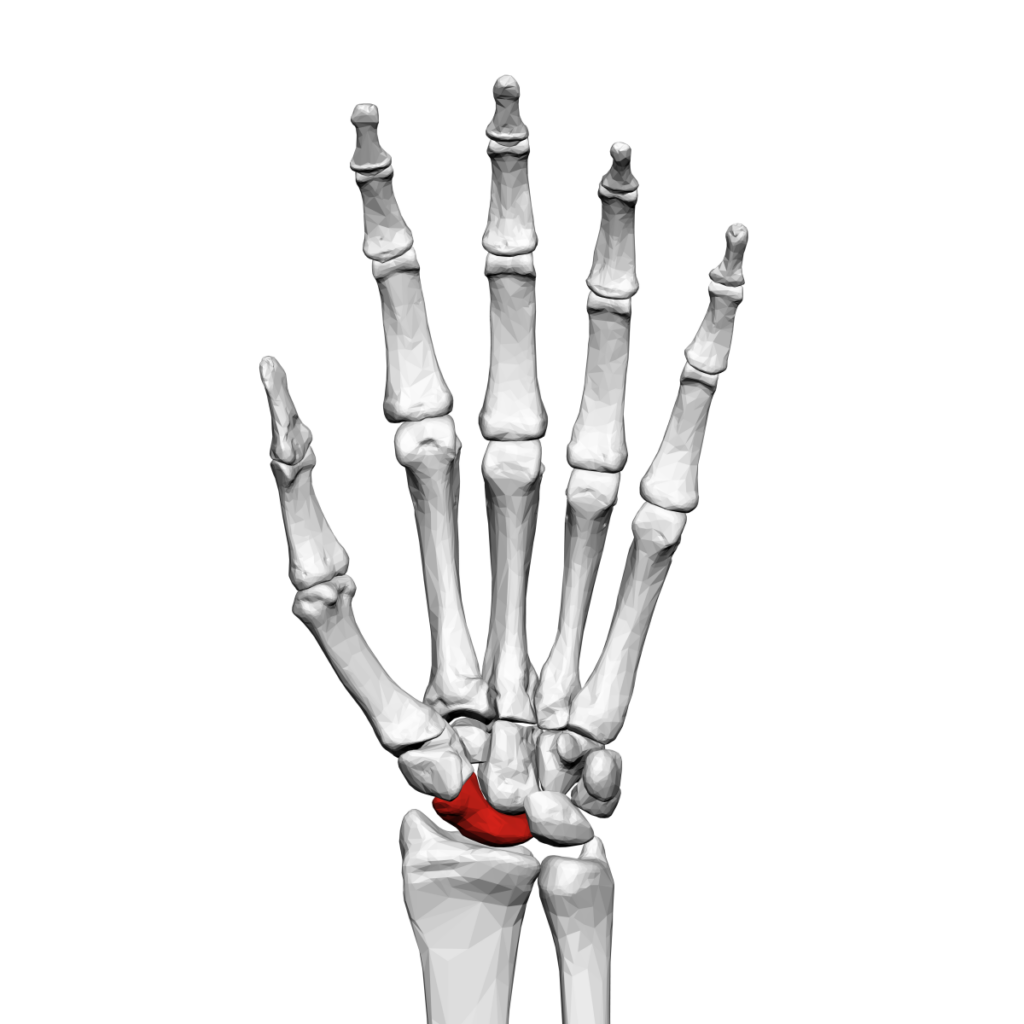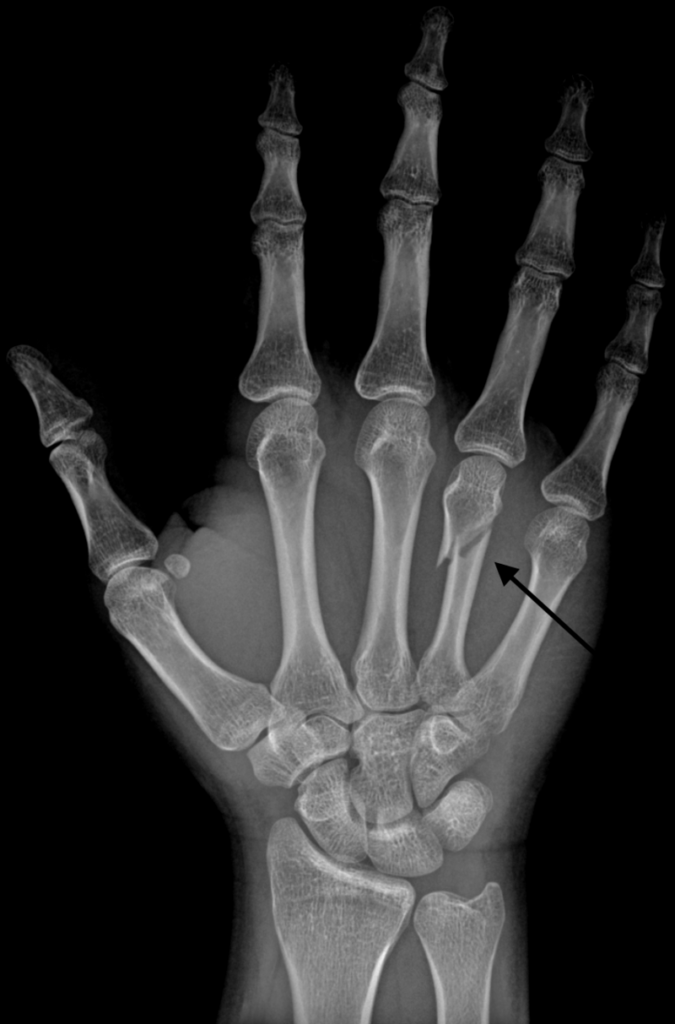A person’s childhood is a time of learning and experimentation, which often leads to their fair share of bumps and scrapes. What many people don’t realise however is that young children and adolescents are actually at a greater risk of certain injuries than those who have reached adulthood. Today we are going to take a look at 3 of the most common paediatric injuries we see and hopefully give you a little insight into how to avoid them!
What makes young people susceptible to hand and wrist injuries?
Like most other traumatic injuries the risk of hand and wrist damage peaks in our early years. The simple reason for this is that as we grow, we begin to explore the world around us and test out what we can and can’t do, building the knowledge that will keep us safe for the rest of our lives.
We generally have two peaks in the risks we take, first in our earliest years (0-4), and second in our early teens (11-16). The types of injury we sustain also changes with our age group. Children between 0 and 4 are far more likely to sustain crush injuries due to the nature of their exploration. Something as simple as ensuring your hand isn’t shut in a door is a lesson that must be learnt, and it is during these formative years that most people have the painful experience that will instruct them for the rest of their lives.
In later years we become more vulnerable to traumatic hand and wrist injuries not through learning which risks not to take, but instead deliberately taking them. Between the ages of 11 and 16 the majority of us peak in taking up new and dangerous activities. The types of paediatric hand and wrist injuries that we see also changes from crush injuries and lacerations, to fractures from transverse and shear forces.
In our early teens many people take up new sports like football, rugby, hockey and netball. All of these sports pose a risk of damage to the hands and wrists, whether it be a hockey stick across the back of the hand, or a finger caught in a rugby jersey and put under tremendous strain. Not only do teenagers take up traditional sports, they also begin activities like skateboarding, mountain biking and more recently freerunning to get their adrenaline fix. All three of these hobbies present an enormous risk to the hands and wrists through defensive actions like breaking falls and so contribute to the ever growing number of paediatric hand and wrist injuries.
The most common injuries
While we see a wide variety of paediatric injuries there are some that are more common than others, and so let’s take a closer look at them to get a better understanding.
Scaphoid Fractures
A scaphoid fracture is the action of breaking your scaphoid bone, which is one of the carpal bones located at the join of your hand and wrist. These injuries normally occur when falling onto an outstretched hand, which is commonplace when playing sports. While you may fall without injury, if you land with your palm flat to the ground and your wrist bent backwards, you are at a high risk of a scaphoid fracture.
As scaphoid fractures are a form of “breaking your wrist”, you will experience the predictable symptoms of pain and swelling around the area, along with difficulty or discomfort when articulating the wrist. Where these injuries differ from a full break of the wrist is that as the scaphoid is a small and surrounded bone, the pain you experience might not be so bad that you immediately assume it to be broken, and instead feel that you have a sprain. This is very common with scaphoid fractures and many people are only made aware of them by visiting a doctor several weeks later when the pain hasn’t subsided.
Scaphoid fractures are treated like most other wrist fractures, by putting your arm in a cast for 8-12 weeks and allowing the break to heal. If the bone has been displaced it will require surgery to be fixed, however this will be assessed by x-ray or CT scan.
Metacarpal Fractures
Metacarpal fractures are another very common fracture among children of all ages. In layman’s terms, it is breaking the back of your hand (the metacarpals being the bones that connect your fingers to your wrist). These fractures are also known as “Boxer’s fractures” and “Scrapping fractures” due to their nature of occurring when a clenched fist strikes a solid object.
These are common in sports like rugby and hockey where the player is at risk of striking a solid surface (an opponent’s hockey stick or skull for example) with a closed hand. These injuries most commonly occur when the impact to the knuckles is at an angle to the axis of the metacarpal, for instance not punching straight on but performing a downward strike with the top of your knuckles. This forces the metacarpals to bend and with enough force they snap.
In most cases the only symptoms are pain and swelling, and require a doctor’s examination to diagnose the injury, but in some extreme cases the injury is plainly obvious as the metacarpal can break through the skin on the back of the hand.
In most cases this injury is simply rectified using a splint to hold the damaged bone in the correct location and allow it to heal but if the two ends are too far out of alignment then surgery will be needed to rejoin them. This surgery can include the fitting of screws and plates to hold the bones correctly.
Thumb Ligament Injuries
Thumb ligament injuries most commonly occur when the thumb is extended drastically away from the rest of the hand, leading to the ulnar collateral ligament (UCL) being stretched past its breaking point and causing it to tear. It is a very common sports injury and so is also a common condition found in young people.
This type of injury often occurs during a violent fall, where the thumb is forced flat under the weight of the body. Thumb ligament injuries are also known as Skier’s thumb, as regular skiers often fall foul of a UCL injury.
Identifying a thumb ligament injury can depend on its severity, but in most cases you will experience pain and swelling in the thumb both at its base and throughout its length, weakness of grip and a reduced range of motion. As with all injuries however if you think your child has suffered a UCL injury then it is important to have it checked by a paediatric specialist as they will be able to utilise ultrasound and MRI scans to directly visualise whether or not the ligament has been damaged.
During the examination the specialist will also test the laxity of the damaged thumb against its uninjured counterpart to assess the severity of the thumb ligament injury, which is broken into 3 grades:
Grade 1:
Stretched ligaments but only causing discomfort and swelling with no actual tear to the UCL.
Grade 2:
Substantial stretching, causing a partial tear and resulting in a loss of movement.
Grade 3:
A severe sprain that has caused a complete tear to the UCL. This is a significant injury that potentially requires surgical treatment.
In less severe cases a thumb ligament injury is treated simply by casting the hand for 6-8 weeks and allowing the ligament to repair itself. In more severe cases, the ligament snaps and the ends become entangled around surrounding tendons. This can only be treated surgically, as the two ends of the ligament will be unable to reconnect properly in these positions.
How best to ensure your young ones avoid hand and wrist injuries.
Having a few bumps and scrapes is part of life, and unfortunately there is no way to guarantee that your child will avoid them. What we can do however is limit the amount of damage they do to themselves during their fearless years.
In very young children, the only solution is supervision whenever possible, but importantly letting them experience some of the less painful situations. All toddlers have little tumbles when they’re learning to walk, and these falls are an important part of the process, to help mitigate the risk of serious harm a parent must simply ensure their child is not in a position to tumble off something, which could cause them more damage. This is just one example of the many challenges parents face when keeping their child safe.
In teenagers this becomes more challenging, but an excellent way to ensure your child isn’t taking unnecessary risks also provides some valuable bonding time. Where possible, engage in your child’s sporting activities, either by taking part or simply being there to provide support. Taking mountain biking as an example, going with your child means they can still carry out the activity but should they decide to try out Brandon Semenuk’s latest trick you can rein them in before they seriously injure themselves. Should your child cause themselves harm it is important that they see a specialist who understands the complexity of the injury in paediatric circumstances. Ladan Hajipour is a highly experienced hand and wrist surgeon with a wealth of experience in treating young people. Get in touch with her today by clicking here.






